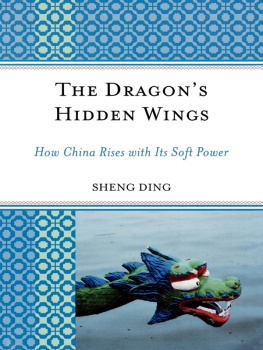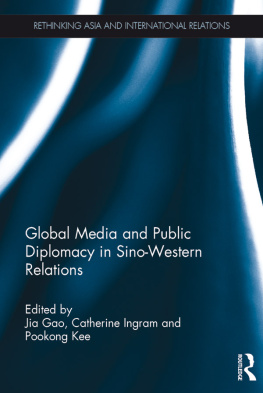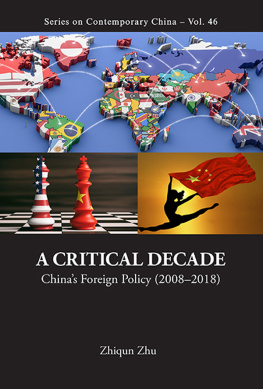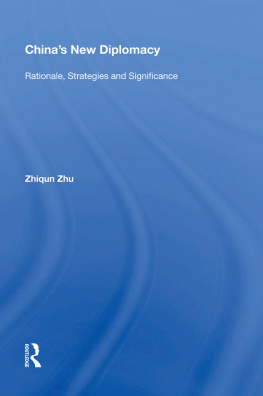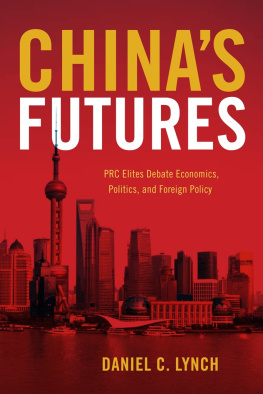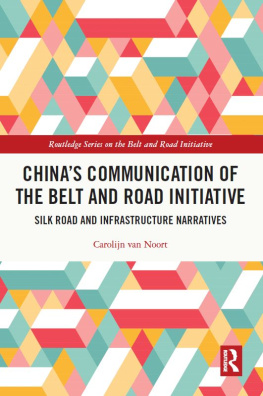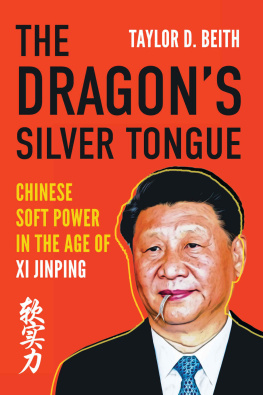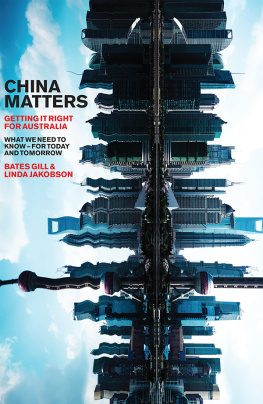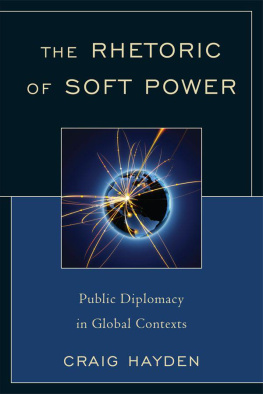Chinese Television and Soft Power Communication in Australia
Chinese Television and Soft Power Communication in Australia
Mei Li
Anthem Press
An imprint of Wimbledon Publishing Company
www.anthempress.com
This edition first published in UK and USA 2020
by ANTHEM PRESS
7576 Blackfriars Road, London SE1 8HA, UK
or PO Box 9779, London SW19 7ZG, UK
and
244 Madison Ave #116, New York, NY 10016, USA
Copyright Mei Li 2020
The author asserts the moral right to be identified as the author of this work.
All rights reserved. Without limiting the rights under copyright reserved above, no part of this publication may be reproduced, stored or introduced into a retrieval system, or transmitted, in any form or by any means (electronic, mechanical, photocopying, recording or otherwise), without the prior written permission of both the copyright owner and the above publisher of this book.
British Library Cataloguing-in-Publication Data
A catalogue record for this book is available from the British Library.
ISBN-13: 978-1-78527-202-8 (Hbk)
ISBN-10: 1-78527-202-0 (Hbk)
This title is also available as an e-book.
CONTENTS
This book could not have come to fruition without the kindest support and help emotionally and intellectually from many people at various times and in numerous ways. The biggest debt of gratitude goes to Prof. Naren Chitty AM, whose extremely generous guidance, encouragement and support were the most important factors that assured completion of this study. I would also like to thank Associate Prof. Eric Louw from the University of Queensland without whose encouragement my PhD research may not have come out as a book.
I sincerely thank the scholars and media professionals from around the world who offered encouragement and feedback for my research for this book at different stages. They are (in the order of my meetings with them) Prof. Joseph Nye, Prof. Jian Wang, Prof. Jin Jianbin, Prof. Fan Hong, Prof. Shi Anbin, Ms Li Wensha, Prof. Zhong Xin, Prof. Gary Kreps, Prof. Jan Mellisen, Prof. Hugo de Burgh and Prof. Daya Thussu.
Special thanks are due to Prof. Zhang Yuqiang, Dr Ye Hongyu, Associate Prof. Huang Dianlin, Prof. Huang Kuo, Ms Yang Ning, Ms Mei Yan and Ms Guo Chun for their support when I was conducting research in Beijing and Washington DC.
I am also tremendously grateful to the anonymous respondents in Australia and China for their time and valuable insights.
I would also like to thank the team from Anthem: Ms Megan Greiving, Mr Tej P. S. Sood and many others for their support during the publication process.
Last but not the least, my deepest gratitude goes to my family for their constant love and support and for the joy they have brought to me during the years of hard work as a researcher.
| ABC | Australian Broadcasting Corporation |
| AIIB | Asian Infrastructure Investment Bank |
| ASEAN | Association of Southeast Asian Nations |
| ASIO | Australian Security Intelligence Organisation |
| BBC | British Broadcasting Corporation |
| BRFIC | Belt and Road Forum for International Cooperation |
| BRI | Belt and Road Initiative |
| CCTV | China Central Television |
| CCTV NEWS | China Central Television English news channel |
| CGTN | China Global Television Network |
| CIA | Central Intelligence Agency |
| CIPG | China International Publishing Group |
| CNN | Cable News Network |
| CNR | China National Radio |
| CRI | China Radio International |
| CPC | Communist Party of China |
| GRC | Global republican confederacy |
| IPTV | Internet protocol television |
| NSW | New South Wales |
| OBOR | One Belt One Road |
| PBS | Public Broadcasting Service |
| PD | Public Diplomacy |
| PPP | Purchasing power parity |
| PRC | Peoples Republic of China |
| R&D | Research and development |
| RT | Russia Today |
| SARFT | State Administration of Radio, Film and Television |
| S&T | Science and Technology |
| SBS | Special Broadcasting Service |
| SCMP | South China Morning Post |
| SMH | Sydney Morning Herald |
| TPP | Trans-Pacific Partnership |
| NWICO | New World Information and Communication Order |
| WICWS | World Internet Conference Wuzhen Summit |
| WMS | World Media Summit |
| WSIS | World Summit on the Information Society |
| USIA | United States Information Agency |
| USIS | United States Information Service |
| VOA | Voice of America |
Chinas rise has been one of the most significant issues in world politics in the last few decades. Celeritous economic growth has greatly boosted Chinas status in world affairs. Since the adoption of its reform and opening-up policy in the late 1970s, Chinas economy has experienced a four-decade-long period of high-speed growth. In 2010, it surpassed Japan to become the second-largest economy in the world. IMF statistics recognised that in 2015 it became the largest economy in terms of purchasing power parity (PPP). Although China lags far behind some developed countries for certain indicators, it ranks first in the world in many dimensions: It is the largest manufacturing economy, the largest source country of the world tourism market and the greatest engine of world economic growth. In recent years, its heavy investment in the high-tech industry has made its competition with the United States fiercer in the eyes of analysts.
Accompanying the rise of its economic status has been the growth of its significance in world affairs. In many cases, how to react to a rising China has become a concern for many countries, especially the established great powers. Observers have interpreted the influence of Chinas ascendance on world order in various ways. Under a realist perspective, the economic rise of China coupled with its growing military budget is inevitably interpreted as a potential threat to the existing world order, one that may trigger conflicts (Al-Rodhan ).
At the policy level, a wariness that the rise of China will upset the balance of power architecture and threaten the security of Chinas neighbours and the world has become apparent in policy circles in many countries in recent years. The fear lies in Chinas high economic growth potential precipitating parallel growth in military power, fierce economic competition, the propagation of social values and norms coloured by Chinese socialist ideology, and assertiveness regarding its territorial claims (Campion ).
From the Chinese perspective, the wariness of external observers is mostly categorised as an image issue. Presenting a good image has been an important task for the Chinese government when dealing with domestic and international affairs; countering negative framing is standard procedure. Chinese political leaders have attached special importance to Chinas national image since the reform and opening-up period. Each generation of Chinas leadership has made statements about Chinas image in published works and speeches. For example, Deng Xiaoping emphasised the reforming and opening-up image to convince the international society of the countrys willingness to open its doors with the aim of building trust and confidence in it (Deng


